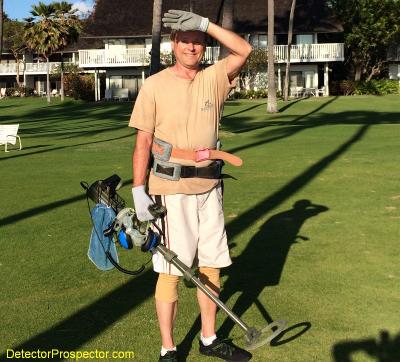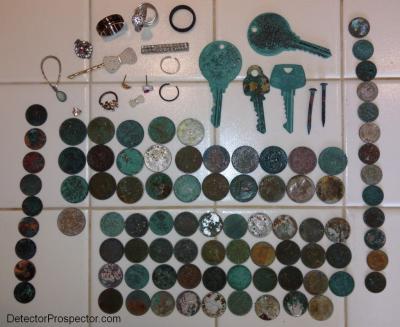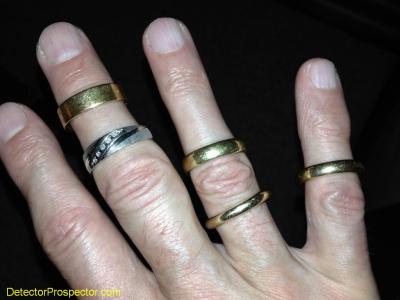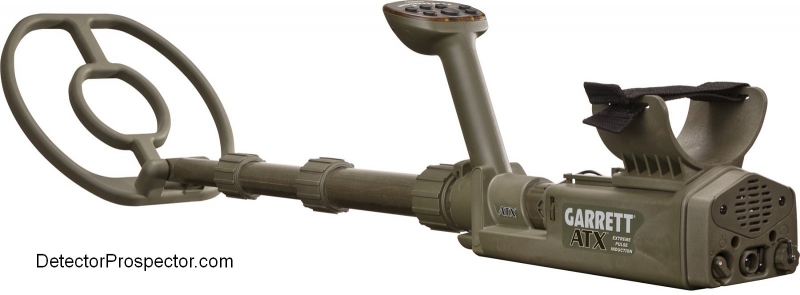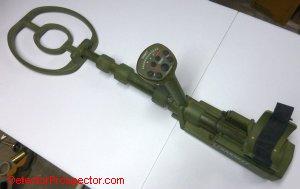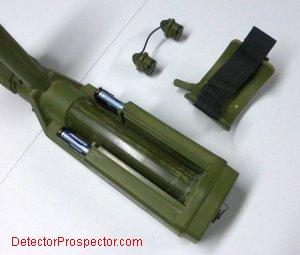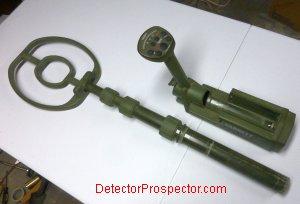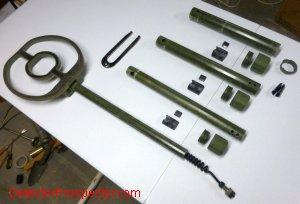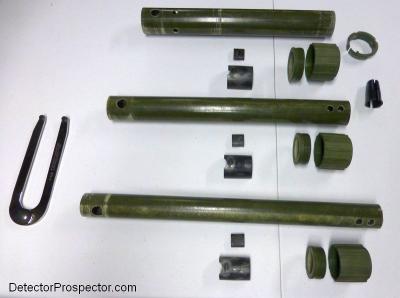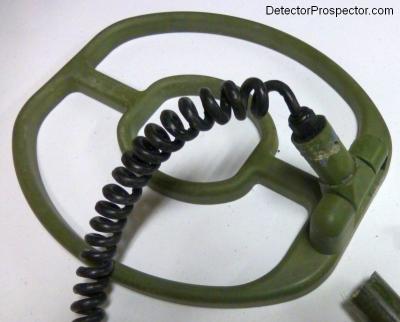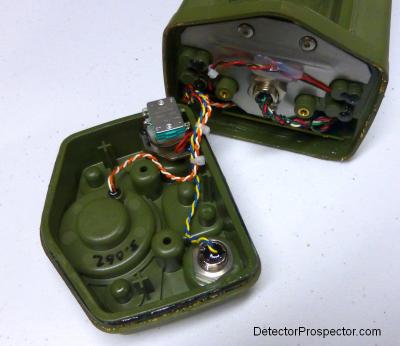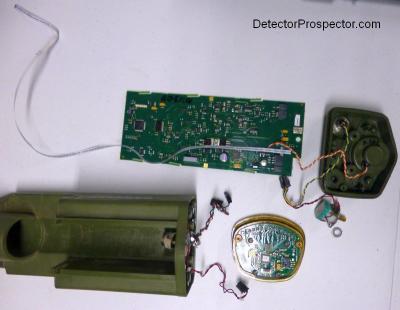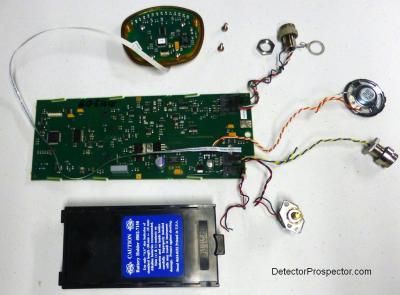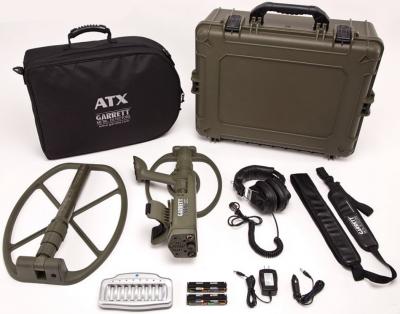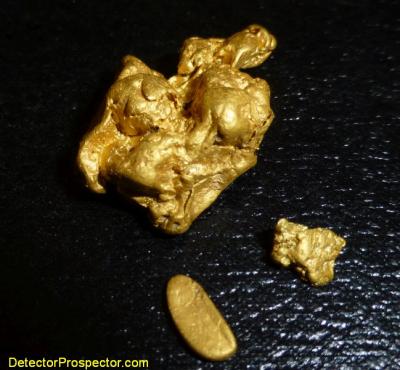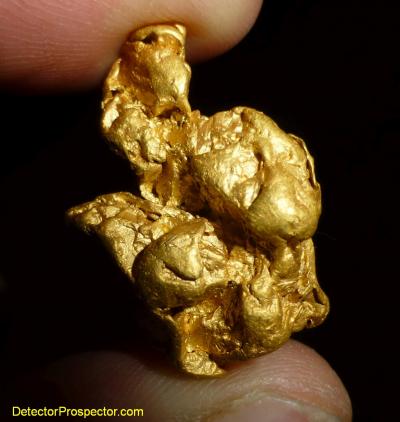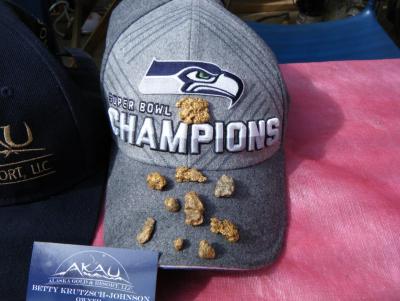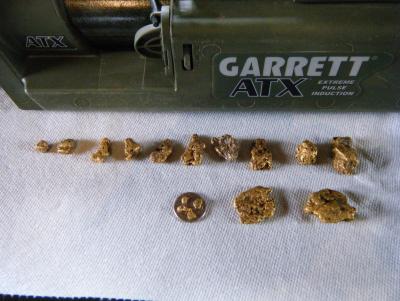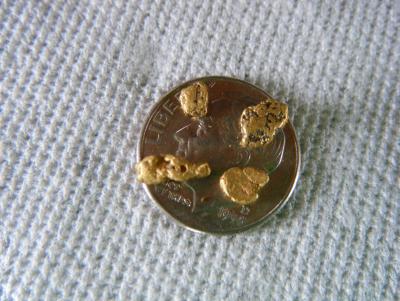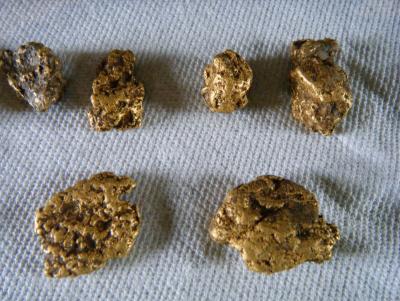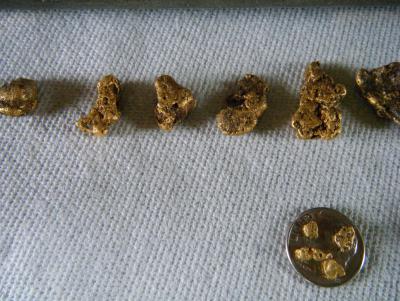Search the Community
Showing results for tags 'garrett atx'.
-
Thinking of purchasing one of these as harsh enviorment tool. Looking to spend under 550.00. Its getting to b the time of year where any detector i take out is gonna get wet and i dont want to take the chance with non-wp detector. Anyone use the recon before personally? Advise? Thanks guys.
-
Well I'm wanting to add to my collection and want to put a P.I. in the little army of metal detectors that I'm forming... Got my eye on a Garrett Atx at a decent price.... Question is I'm still new to all this and wondering I'd this is a good machine for a beginner just knowing the basics like myself????? I don't really know how to use the forum that good to find any info on one regarding difficult of use.. Thnx
-
Hi guys I'm new to this site and was wondering if the 8 inch mono coil from the recon will work on the ATX ? Or should I just try the direction that everyone is talking about with the infinium coil? I like this machine but after about 1 hr it starts getting heavy.any options would be appreciated. I should have started with I've been detecting since 1994 and just recently decided to go for the gold with all the restrictions at all the parks local and state I'm done with the harassment anyway that's another forum. Thanks Dan
-
I have done well in Hawaii with my Garrett ATX as told in my previous story at http://www.detectorprospector.com/forum/topic/102-garrett-atx-review-beach-detecting-in-hawaii/ Most of the details of where and what I am doing, detector settings, etc. are all covered there so I will not repeat it all here. My wife only had a week off for spring break so I had half the time to work with this go round. Still, I think I did all right. Now that I have my system down less time was wasted figuring things out. I used the Garrett ATX exclusively with the 8" mono coil. Discrimination was 3 and Sensitivity 7-8 with unit ground balanced underwater over basalt rocks. I only worked in the water with mask and snorkel. I work right in the trough at the base of the beach slope a lot in 2'-4' waves and so I use 40 lbs of lead weight to help stay in place. Working overweighted in surf like this can be very dangerous if you do not have a very high comfort level. I have multiple SCUBA certifications up to and including my instructors certificate. Official disclaimer - I do not recommend working like this unless you are trained and know what you are doing. Just swimming trunks with tshirt. I use cheap knee brace pullovers you get in the pharmacy area in a general store as knee pads. Cheap rubber coated work gloves to protect my hands while digging. Surf shoes to protect my feet, and a good mask and snorkel. I hook the velcro strap on the ATX armrest around the handle of a clasp closure mesh goodie bag to hold stuff as I recover it. I bend bobby pins before dropping them in the bag or they slip through the mesh. I hunt with mask and snorkel until I get a target. I look around for surfers and boogie boarders, evaluate the wave situation, and do a breath hold and duck to the bottom. I generally fan the bottom with my hand or excavate by hand to find the target, then stuff it in a goodie back hanging off my ATX armrest. Scoops are just one thing too many for me to handle in the surf and no good on hard surfaces anyway. I focus on the area where the sand is tapering into a hard coral or rock bottom that will catch and hold targets from sinking too deep. My main change of strategy this trip was to not dig everything. The ATX makes a hi-lo tone or a lo-hi tone on targets. Lo-hi is high conductive stuff like copper pennies, dimes, quarters, and large iron junk. Or silver rings or very large mens gold rings. Hi-lo is almost all gold or platinum jewelry, zinc pennies, nickels, aluminum stuff, and small steel stuff like bobby pins and rusted bottle caps. I was getting lots of copper pennies, dimes and quarters plus some large junk the first couple days. Dimes and quarters may sound nice but when recovering them in surf at risk to life and limb they are a definite trash target as far as I am concerned, though I did get a large silver ring also. I decided that gold rings were the main goal and with the short week I had no time to waste, so switched to digging hi-lo tones only. I was happy with the results and would recommend this to anyone using an ATX who for similar reasons what to improve the dig to ring ratio. Be aware though certain high value targets like very large mens rings will be missed. I recovered a couple earrings and that impressed me very much in an underwater scenario. The ATX hits gold about as small as is possible in salt water. There was one well made fake diamond ring in particular that would have been my best ever had it turned out real. I recover them underwater, can't really tell but they sure look good underwater, and do not know until I get back to my room and empty the goodie pouch if I have made a big find. I hope the whole rest of the hunt, only to be let down back at the room. Gold rings on the other hand I know immediately are good finds. I also found a couple more old Sheraton hotel big brass keys to add to my collection. These are rare now at the beach as they are large easy finds, but if the sand scours out one will still turn up now and then. All the quarters, dimes, and copper pennies were recovered in the first two days. After that it was nickels and zinc pennies only and I toss the zincs in the garbage. Unless only a day or two old the salt water rots them away to junk. I had a nice pile of lead fishing weights I donated to the dive shop where I rented my weight belts. There was the usual junk as seen on the other page linked at the start of this post but this year I discarded it daily as I have done enough "here it all is" pictures. All in all given that I had half the time to hunt my finds were on par with the last trip though the beach is depleting out. I considered going to other locations but by the time I drive somewhere else and back that is another hour or more that I could have been in the water. I do not hunt just Poipu beach but the next several beaches in a row so there is a large area I can walk to. There are always newer rings lost but it is the combination of many years of old rings and new rings that make it good, and as the old stuff depletes out then all there is to find is recent drops and the pickings get slimmer. Still, the location is far from worked out. I only saw one other person with a detector, a local I saw last trip, who walks the beach at waters edge at low tide. He seems as concerned with being out for a walk as detecting as he covers ground real fast. I like the ATX ability to easily adjust the rod length on the fly from very long to extra short. I did experience a little sand binding in the rods but took care to work the rods and flush them out before leaving the water each time and everything worked fine. I only charged batteries twice on the trip. The 8" mono with rod assembly is now my dedicated water coil, with the 12" x 10" used above water. The water use is rough on the rod and internal cable assembly and so I figure having a coil and rod just for that keeps the stock coil in better shape for normal use. I came away very happy once again with the Garrett ATX. It suits me very well for my style of water hunting. The four 14K rings weighed in at 21.9 grams total. The silver colored 10K white gold ring with five small diamonds weighed 4.1 grams. The excellent gold smelt calculator at http://coinapps.com/gold/scrap/calculator/ reveals that to add up to 14.47 grams or nearly 1/2 oz of pure gold or about $500 bucks if sent to a smelter. I plan on refinishing and selling the rings in the future instead of having them smelted as I have in the past though so they should bring a bit better value that way. This post was promoted to an article
-
Hi All, I'm new to this great forum but not new to detecting. I live in Prescott Valley, Az in the heart of gold country and when not working I'm hunting or prospecting. Steve's Frankin-ATX project got me to thinking about the ATX and it's issue with falsing. I really like the ATX except for the usual complaints of excess weight and the falsing. The weight I can tolerate but the falsing drives me crazy. I believe the falsing is due to the cable being unsecured/loose inside the shaft. My question is for anybody who has modified the ATX and wrapped and tied the cable to a different shaft...does this stop the falsing? And, it may be too early in the modification of this detector to ask this, but does anybody do a Steve-like mod to this detector for a fee? I dont mind the control box as is but a shaft/coil mod where the stock coil is center mounted and the cable is tied down would be awesome. I'm not comfortable doing these mods myself. Thanks! Dean
-
Is there any difference between a used ATX and the currently manufactured ones? Seems like I saw something was changed but can't remember if that was the ATX or another detector. Thanks, Paul in Spokane
-
Hi Guys New to the forum and metal detecting. Trying to make a decision between the 3 detectors mentioned above. I'm going to be doing most of my detecting on the Northwest beaches. I will also be doing some park hunting and then once a year prospecting in Arizona. I may try a little prospecting in the Northwest too if I find extra time. Initially thought the Excalibur was the way to go, but then after reading posts on several forums I'm starting to have doubts about its durability. I'm leaning towards the ATX at this point, but would like to get some final input on these 3 machines before I make a final decision. Any thoughts and input would be greatly appreciated.
- 25 replies
-
- garrett atx
- minelab ctx 3030
-
(and 1 more)
Tagged with:
-
I consider myself fortunate to have met Garrett's Senior Design Engineer, Brent Weaver, many years ago during prototype testing of the Garrett Infinium. I think Brent deserves a great deal of credit in making Garrett the leader it is today with a series of incredible innovative bang-for-the-buck metal detectors, first and foremost being the AT series. Brent is just a real nice guy - comes across as a regular Joe not a head in the clouds engineer. I think this video shows that. It also has an extremely interesting discussion of pulse inductions detectors, ground balancing methods, and the dreaded "hole" that occurs when ground balancing. There is explanation of why the holes occur and how some designs try to alleviate but not eliminate the problem. Good stuff, starts around the 3:40 minute mark. The audio quality in this video truly sucks. However, this is important information, and so repeated listens, typing, and listening again on my part, produced the following transcript. Again, this is from Brent Weaver, Senior Design Engineer, Garrett Metal Detectors. Transcript starting at 3:40 mark: "If you look at the various pulse detectors that exist on the market, you have your simplest pulse machines, which are single pulse machines that are non-ground balancing. Those are detectors that are typically exclusively used for the beach, for example, the Sea Hunter or something like this. The next step in advancement there is to have a ground balancing pulse machine, those can still be a single pulse detector. This pulse channel is able to ground balance, which means it can neutralize the ground. The problem with that sort of technology is when you ground balance out the ground, you can also balance out any target that has a decay characteristic that is similar to the ground. We call this the "detection hole". Essentially, it is a hole in the conductivity... when you look at the conductivity of gold or any material, you look at a conductivity spectrum. The decay rate of that... pulse decay is a function of the conductivity of the material and also the thickness and shape of the material. It all factors into effective conductivity. For a ground balancing pulse detector, again, if the conductivity of the ground is similar to the conductivity of the target, when you ground balance out the ground you also ground balance out the target. To eliminate that problem, you create a second pulse which is substantially different than the first pulse, such that when you ground balance out the ground on the second pulse, its conductivity decay as far as the target is concerned, the conductivity decay on the first pulse and that on the on the second pulse do not match each other. As a result, as you ground balance out the ground on the first pulse, you create a hole, and you ground balance out the ground on the second pulse, it also creates a hole, but it is in a different location. And so, those two pulses working together in unison, working simultaneously, one will always fill in the hole of the other, they overlap such that you never have a detection hole. If you only have a single pulse detector, and it ground balances, it will have a detection hole. There are various products on the market, some are less expensive than the ATX, some are more expensive than the ATX, but if they are a single pulse detector, they are going to have a hole in their detection, period. You are going to miss gold. You are absolutely going to miss gold. Now where that hole falls depends on the mineralization conditions, and where the ground balance is set for the detector. As the ground balance shifts, the hole shifts with it. If you have a detector that has continuous ground tracking, such that you cannot switch it off, as that ground track moves around for the various ground conditions, the hole moves around with it and the targets are disappearing into that hole. You never know where the hole is at any time. Again, to eliminate that problem, the more advanced, the most advanced detectors, like the ATX, use multiple pulse technology. They don't just have one single pulse that repeats, they have different kinds of pulses, and those pairs repeat. That is one of the differences in a true high end performance product like the ATX, versus some of the other products on the market. They are good products, and they are ground balancing pulse detectors, but if they are a single pulse technology, they have a hole in their detection that will miss targets." Now, for me listening to that it is obvious that Garrett was clearly gunning for the White's TDI. How do I know that? Because it was Minelab that originally put multi period pulse detection into the consumers hands, via their MPS (multi period sensing) technology beginning with the ground breaking SD 2000. The White's TDI on the other hand is an older design, and in fact is basically just an Eric Foster Goldscan stuck in a White's labeled box. The Goldscan and the TDI are a single channel ground balancing pulse detector with the problem that Brent outlines in the video. Bruce Candy of Minelab saw the same issue, and the SD 2000 was specifically developed as a multi channel or multi period device for this very reason. MPS was patented, and so I am not sure if it was the patent expiring, or Garrett simply using a method that got around the patent, but the ATX is using a similar multi period design as the SD Minelabs. Having used the Minelabs and the TDI, plus the ATX, I can vouch for the electronics in the ATX as being very capable, and I do believe superior to that in the TDI. My ATX in fact tested favorably compared to my GPX 5000 with the 5000 having the edge, but not as much as I expected. I think in large part that is simply due to the Minelab using a much more powerful battery, pumping far more power into the ground than the ATX with its eight AA batteries. Unfortunately, in my opinion Garrett, made a huge mistake in taking these excellent electronics, and hobbling them with a housing that did not take advantage of one of Minelabs biggest weaknesses - ergonomics. The TDI had and still has a distinct edge in that regard, and at a lower price than the ATX. Ironically, it is also that detection hole and the ability to manipulate it via a manual ground balance that has become, not the big problem as laid out in this video, but a feature of sorts in favor of the TDI. People have learned how to manipulate the hole to help identify targets by using the ground balance control as a sort of reverse discrimination control. Combined with the unique conductivity switch on the TDI knowledgeable users can become very proficient at identifying various target classes, and this has made it very popular with relic hunters in particular. What history in hindsight reveals, in my opinion, is that Garrett missed the boat with the ATX as regards Minelab. The ATX hit the market before the SDC 2300, and had a window of opportunity to really make inroads, if it had been in a lighter weight dry land package, with a light dry land coil set designed specifically for desert prospecting. The electronics are there; it is the heavy housing, and heavy knock sensitive coils, overpriced by an attached telescoping rod assembly, that really hurt the machine. On the flip side, I don't think they did too much damage to the TDI either, with the TDI being a less expensive, more ergonomically friendly unit. Like the Garrett Infinium before it, the ATX has settled into being more a beach detector than a prospecting detector. I have of course been making hay over this since day one, and continue to make an issue of it at every opportunity, in hopes that we may see a Garrett LTX some day. Dry land design only for the absolute lightest weight possible machine with light weight knock resistant coils to match, it would be a winner. There is a market still I believe for a $1500 -$2000 ground balancing PI detector that clearly has more power than a TDI in an all in one package lighter than anything Minelab currently markets. The only question in my mind is whether Garrett will finally get it right, or will it finally be a moot point, when new Fisher, White's, and Nokta/Makro machines waiting in the wings finally arrive.
-
PM coils is coming out with ATX coils in the near future, Currently they're working on getting connectors and from my understanding this may be the holdup. Asked what the status is with DD coils and they said maybe in the future but for now PM coils will focus on mono coils since these are the most popular. Recently, Swapped out my Infinium DD coil from the Recon/ATX shaft and remounted the coil onto a different setup. This setup was to give me an idea what type of setup will work best with a future PM coil, Weight wise it's about the same as the stock ATX shaft maybe a little lighter but this setup is very encouraging knowing it will work well with the ATX when experimenting with other coils. Both lower and middle shaft are from a Minelab, As far as cable movement it has very little after going back with the straight cable because these shafts are not big enough to use an expandable coiled type cable. The shaft does have some movement if I want to extend or shorten the shaft, Not much thought but enough to adjust for about any person. Will post a pic in the future of a PM coil using this same type of setup, Each coil will have their own lower/middle shaft that locks into the ATX. Paul (Ca)
-
I have had the Garrett ATX now since the fall of 2013 and so have had a solid year with the detector. It really does take about a year for me to settle down my thoughts about a detector. I tend to be all giddy with the new toy at first, having fun, and discovering new things. The strong points and weak points are revealed with use over time, and now I think I can offer up a fair summary of the detector. The ATX is a bit difficult in that Garrett started with the premise of using an existing housing designed to military specifications, and then decided to put a detector in it for consumer retail sales. On one hand this is really great as we get this very unique detector design that would never have been developed just for consumer sales. On the other hand it means for some uses the ATX is just not a very good fit. For other uses it works pretty well. It just so happens I am an avid prospector and an avid beach hunter. I do not beach hunt as much as I like but when I do it I really go after it. Because of this the ATX hits a particular sweet spot for me personally. I really do need a good pulse induction metal detector that can be submerged in saltwater. I would keep the ATX for that purpose alone. I am very happy with its performance as a beach detector especially on beaches where there is black sand mineralization or volcanic rock to deal with. The fact it also does very well as a prospecting PI is almost a bonus for me. From a straight up prospecting perspective Garrett also scores though nobody needs a seven pound detector waterproof to 10 feet while desert prospecting. However, if all I had was a couple thousand dollars to invest in a brand new, full warranty PI for gold prospecting it would be a Garrett ATX. I believe the ATX is superior to the White's alternatives in overall performance and it is far less money than a new Minelab PI detector. I will not speak for the Australians but in the U.S. the ATX holds its own for PI performance and I feel quite comfortable using it gold prospecting. I could wish for a lighter package but the fact is it works and a person who puts in the effort should do just fine with the ATX. I know I can. The ATX does well for relic hunting applications and I have even found I can cherry pick coins halfway well with it. I have always been partial to pulse induction detectors and Garrett has won me over with the ATX. I enjoy using the detector and I can make good finds with it, and that is all I can ask of any detector. In retrospect I have actually done remarkably well with the ATX since I got it, considering it is only one of several detectors I have been using and not the one with the most hours on it. I have found about 3 ounces of gold and platinum jewelry with the Garrett ATX plus about two ounces of gold nuggets with it. I have found gold nuggets in Alaska, Arizona, California, and Nevada with the ATX under sunny skies and in pouring rain. My ATX has spent a couple weeks of days underwater in rough surf and is none the worse for wear. I like the ATX so much I just treated myself to a brand new Garrett ATX Deepseeker package so I now have the full complement of ATX coils and accessories. I am weeding my detector collection down to the bare minimum I can get by with and the Garrett ATX is a survivor in more ways than one. Many thanks and a hat's off to Garrett for producing my all time favorite Garrett detector.
-
The other day I was out with my ATX digging quartz/gold specimens. I had just dug a small piece when I got a really nice signal a couple of feet away. I took 3 or 4 inches out and it was still there. I took another 3 or 4 inches out. Good signal still there and I know it's gold now. At about 12 or 13 inches down, I see gold in the bottom of the hole. Still a good signal. Now, the hole is too narrow to stick the coil in so signal has always at ground level. Time for a beer break until my boys can work their way down the hill to run their GB2's over the hole and see the specimen still in place. They're almost here so I get up and run my coil over the hole just to hear it again. Just a whisper!! It was a great signal a bit ago.... What happened?? BTW, it was a piece a few grains shy of a half an ounce with about three quarters of it gold.
-
Well, coffee and tools in hand I got going with the fun part - taking stuff apart! Many photos in this thread will enlarge if you click on them. You can probably see where I am going with this. Circuit board in a box with single AA battery holder and control panel tacked outside with controls. All in one box that can be rod mounted or hip or chest mounted. If rod mounted, I want to be able to use stock DD coil, or Infinium 5" x 10" DD and 4" x 7" DD. Not willing to pop for another ATX 8" mono at this time as the one I have stays as it is to use with the other ATX I will be getting. We will see how this works out first. In theory I would like to do a real professional box with drop in battery, just like a White's TDI SL but the box would have to be longer. I may however go cruder than that, more like a Surf PI with a lid I need to open to replace batteries. Be nice to use rechargeables and rig to just plug detector in to charge it but again, I may not want to work that hard at it. Paul would do a bang up professional job. I am all about expediency myself. If anybody want to see a closeup of anything or has any questions about how this thing comes apart ask away. I know I had to go buy yet another stupid tool to remove the Torx security screws!
-
I am slowly cleaning up most of my used detector collection and putting it up for sale. Only a few survivors will remain for now: Fisher Gold Bug 2 Garrett ATX Minelab CTX 3030 Minelab SDC 2300 Nokta FORS Gold White's V3i With the departure of my GPX 5000 (in anticipation of the GPZ 7000) I am temporarily lacking a PI with good ground coverage. And no telling what the GPZ will have for large coil options. So after much debate I decided to pick up a new Garrett ATX Deepseeker package, to get the 15" x 20" coil and the carry case. I like the ATX and have confidence in its gold finding capability, and I have to have a waterproof PI so it covers me on two bases. I thought seriously about selling my current ATX to help fund the new one. But since I am selling so many detectors I decided to treat myself. The ATX has been frustrating me due to the packaging in a heavy duty military housing. So my old ATX is going to be sacrificed as part of a project to see just how light weight I can make it using the stock coil, but with the option of also easily mounting the Infinium 5" x 10" DD if I want to make it really featherweight. You are invited along on my step by step disassembly and reassembly project at http://www.detectorprospector.com/forum/topic/462-garrett-atx-strip-down-rebuild/ All I am waiting on is to see what Garrett releases in the way of Christmas holiday packages. Any that appear may or may not include the ATX but it is worth waiting a bit to see. Once that happens the fun and games begins!
-
I have been out gold prospecting with the Garrett ATX recently and wanted to share my latest thoughts on the unit. That, and show off a particularly nice nugget I just found with the detector! I got my ATX right at a year ago. The machine has easily paid for itself and remains one of my favorite detectors. With all the other new detectors I have been using lately I have not had it out enough however, and so I have made an effort to start using it again the last few weeks. I guess my constant prospecting these days is making me tougher as I have no problem using the ATX for long hours with no extra support. Still, for long days I like to use a bungee support off the shoulder of my Camelback style rucksack. Garret was kind enough to send me a set of scuff covers for my coils, and I find the solid scuff cover for the stock coil to be very helpful. It prevents the coil from hanging up in stubble and in northern Nevada allows me to let the coil just ride on the ground. There usually is just a little grass or weeds that act as a buffer for smooth riding. If I get directly on hard rock surface I still pick up some coil falsing but not so much as when the bare coil edges would catch on rocks. The only issue with the solid cover is that it collects debris and must be shaken clean on occasion. I think I will get another scuff cover or even just a flat piece of plastic to fix in place over the top to prevent this from happening. I have been using the headphone adapter so I can run the ATX with my Sun Ray Pro Gold headphones, which sound a bit better to my ear than the supplied headphones. The Garrett headphones are pretty good but I would rather keep them available for backup use. I have toyed with the idea of using my B&Z booster along with a shoulder mounted external speaker but have not quite got around to trying that yet. I think that would be preferable for long hours in very quiet locations. I like to hear what is going on around me. Related to that, I normally run the ATX with a very faint threshold. I have also experimented a bit with running it set just barely quiet, and for patch hunting wandering around I am thinking I may do this more often. The performance edge lost is minimal, and I do enjoy the solitude and silence. Many days detecting for me is nothing more or less than a wonderful long hike over the hills in the middle of nowhere. No headphones and no threshold buzz just might be something I do more of in the future. I know, I should be preaching the opposite but my primary goal these days is enjoying myself and those little things make a difference. Being able to hear a wild horse in the distance or a coyote howl is important to me. I usually dig it all but I do like the ferrous check function on the ATX. It can only be trusted on targets I really know to be junk anyway - nice loud surface signals. But maybe, just maybe that signal is a large shallow nugget! It is nice to push the button and get a solid ferrous indication from the ATX allowing me to work more efficiently in areas with lots of surface nails and other ferrous trash. I don't trust it on weak signals however, especially in very mineralized ground. The waterproof part is nice but really not needed. What I do appreciate is being able to collapse the unit down into a compact package and toss it in my truck. That the ATX uses rechargeable AA batteries is also a bonus because I am starting to standardize on them. All other things being equal I try to get detectors or accessory items that use AA batteries, and I have a lot of AA batteries and chargers due to this. This makes having plenty of extras available for use in the ATX very simple and cost effective. The bottom line is the Garrett ATX is a very capable nugget detector with good performance on a wide range of target sizes. I appreciate the solid, stable performance. I have got no problem going out and finding gold with the ATX. Better yet, I use the ATX for more than nugget detecting. It is my preferred water hunting detector and so in that regard a true bargain. I was just out and hunting an area where I picked up a few nuggets with other detectors recently. I got the ATX out of the truck and wandered down to the wash. I had barely really got the unit ground balanced up and the soil I was walking on just looked like sandy mud with grass growing on it, so I decided to walk upstream a bit for a better location. I got a whisper of ground noise as I walked and a couple steps later stopped and thought "hmmmm... was that really a ground noise?" It had that little something and I was just assuming I did not have the ground balance spot on yet. I backed up and checked, and sure enough there was a soft signal in the grass. I gave a little dig and came up with a 0.7 gram nugget. Well ok then, that was more like it. I started to work the immediate location and just six feet away got a largish signal, probably trash. I dug a bit and it was still in the hole. So I gave it a vigorous scoop and up pops a mud covered nugget. A large nugget! It later weighed in at 26.3 grams or 0.85 Troy ounces. I was ecstatic. I have to tell you that nugget really means a lot to me. Why? Because the location I was hunting was nothing anyone pointed out to me. I was running around looking at some old prospects and had a theory going on the geology and where the gold was coming from. I decided the location would be good on my own just based on what I was seeing, and I scored a really great nugget. The satisfaction of figuring things out and making a good call means more to me than the nugget. It is what real prospecting is all about. The fact that it is also one of the nicest nuggets I have found so far in Nevada certainly does not hurt though. It is a beauty, solid and chunky with a nice kind of flat matte finish. A bunch of hunting later and I scored another small 0.6 gram nugget, for a total of three nuggets and 27.6 grams with the Garrett ATX. I am sure there is more gold waiting out there to be found so can't wait to get back at it. Just a great time in great country, and I have to say I am not missing being in Alaska at all. This beats being in cold rain ate alive by bugs any time. I am getting ready to have a major weeding out of detectors and accessories. My collection of gear has ballooned too far in excess of what I need, and in 2015 I want to just focus on detecting instead of detectors, if you catch my drift. I need a few good machines to cover the bases for my varied detecting needs, but all the rest need to go. I am not much on clutter. One thing I do know for sure though, and that is that the Garrett ATX has earned a permanent spot in my collection. In particular I plan on being on California storm watch this winter, and at the first sign of major beach action I am grabbing the ATX and heading for the coast. The California beach boys will be seeing a new face this winter. And I am very sure there are many more nugget hunts in the future for me and the Garrett ATX. This Post Promoted To An Article
-
Check my thread: Link deleted since Findmall update broke all old links This is weird.
-
I'm loving the performance on small gold below .3 gram of the new SDC 2300. So doing a bit of testing vs the ATX I got the ATX performing a bit closer to the SDC2300 performance on this small gold. Tested in the video is a .25 gram nugget. The dirt in the video will stick to my magnet on my digging pick. Check out the video to see what I did... Bonus video... How to use the Minelab SDC 2300 as a meat slicer:
-
- videos
- garrett atx
-
(and 1 more)
Tagged with:
-
- 29 replies
-
- videos
- minelab sdc 2300
-
(and 1 more)
Tagged with:
-
Hi folks, I did an all day hunt with my mining partner, and unearthed a couple of small pocket gold nuggets in an area I've been detecting for years and have found a 1/4 oz nugget at. As usual we did some video just in case we hit some nuggets. This is in Northern California about a mile up a creek from the Klamath River. Video is from my partners Youtube channel, "The Handergard". I also did an all day Oregon hunt with the Minelab SDC 2300 to no avail for nuggets, but did enjoy hunting with it. Oregon gold nuggets seems a bit more hard to find than California nuggets... Beautiful scenery in this video also...
-
Thanks Steve for letting me know about the Garrett find of the month and sending them my story. I actually won for September and am now the proud owner of a AT GOLD detector. A good machine to go along with my ATX! Thanks again and good luck looking for GOLD! Hope to meet you again someday in the gold fields. David Frickelton (ezdave)
-
Ok. I was ordered used Recon detector, and after shippment from USA to Poland (Europe) unit doesn’t work… you can't power up... I’m owner of 4 months ATX too, (used twice), and I sold the unit from Poland to UK. After shipment doesn’t work too! Could you help me and resolve the problem? This is weird situation.
-
Just returned from Nome Alaska where I managed to find 16 nuggets in 6 days! All with the ATX with the 8 inch mono ( lighter weight for all day swinging) Met Steve in Happy Camp and took his advice as to use the 8 inch mono and dig all targets. Dug plenty of junk but also some nice GOLD. EZDAVE
-
8 inch coil hasn't any serial number... so I think this is the same coil from Recon... how to check it?
-
Anyone have values of each coil weights and shaft weights - carbon and OEM?




